Opera overtures, as a separate genre of classical music apart from their operas, are tied with the history of the symphony and the overture. In the 17th century, a musical form called the ‘overture’ started in France, associated with the music of Jean-Baptist Lully. His ballet and opera overtures can be found as early as 1640 and, what is important, were separate from the music of the opera or the ballet. The early overtures in both France and Italy were three-part works, generally with fast–slow–fast tempos. These early led to the development of the symphony, which added a dance movement, generally as the third movement: fast–slow–minute–fast.
The overview of the music from opera that we expect in an overture did not happen until the 18th century. In keeping with the opera reform ideas that every part of an opera, including the music, had to contribute to the plot. A medley of music, usually from the principal arias, was arranged for the new-style overture, a fashion that continues in opera and musical theatre today.
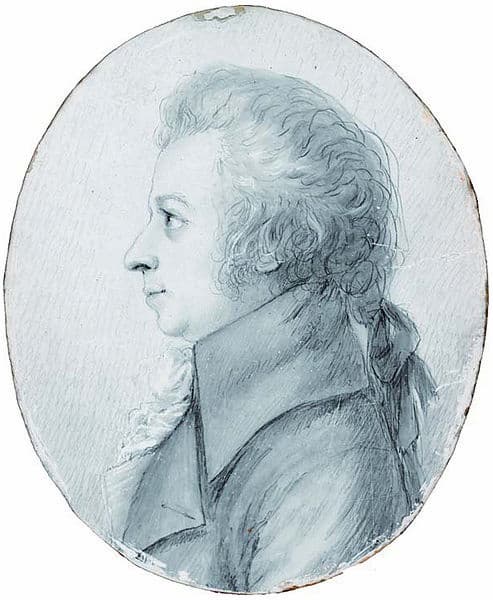
Doris Stock: Mozart, 1789 (Salzburg: Mozarteum)
Wolfgang Amadeus Mozart’s Le nozze di Figaro was completed in 1789, with a libretto written by Lorenzo Da Ponte from a work by French playwright Pierre Beaumarchais. The story is about how Figaro marries Susanna while frustrating their employer’s plans to seduce Susanna. The original story had deeply political content about the abuses of the nobility and was banned by Emperor Joseph II in Vienna for that reason. Beaumarchais’ original story denounced aristocratic privilege and was considered by some as foreshadowing the French Revolution. Da Ponte turned the story to be about unfaithful spouses, and the Censor passed the opera for production.
As an overture, the music instantly brings to life the chaotic goings on in the Almaviva household, with Susanna and Figaro getting ready for their wedding, Count Almaviva plotting on how to meet up with Susanna, Countess Almaviva despairing of the straying of her husband, Doctor Bartolo and Marcellina trying to stop the wedding so Marcellina can marry Figaro, and the count’s page, Cherubino, trying to deal with his teenage desires for the Countess.
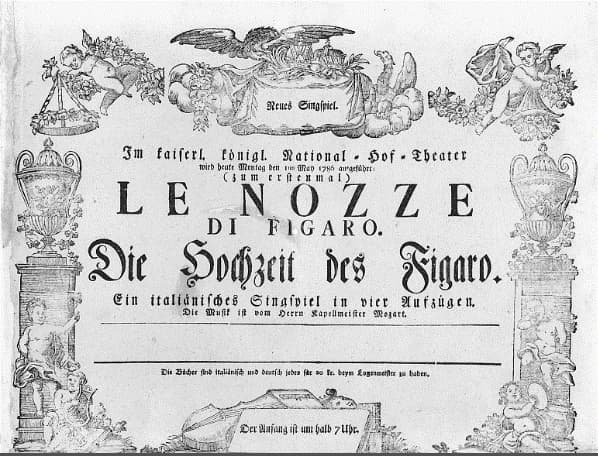
Advertisement for the premiere of Le nozze di Figaro, 1786 (Austrian National Library)
The premiere was given at the Burgtheater in Vienna on 1 May 1786, with Mozart conducting the first two performances from the keyboard. By August, the critics were praising the work as a masterpiece. In the modern day, it is considered one of the greatest operas written and still ranks in the top 10 of most performed operas.
Wolfgang Amadeus Mozart: Le nozze di Figaro, K. 497 – Overture
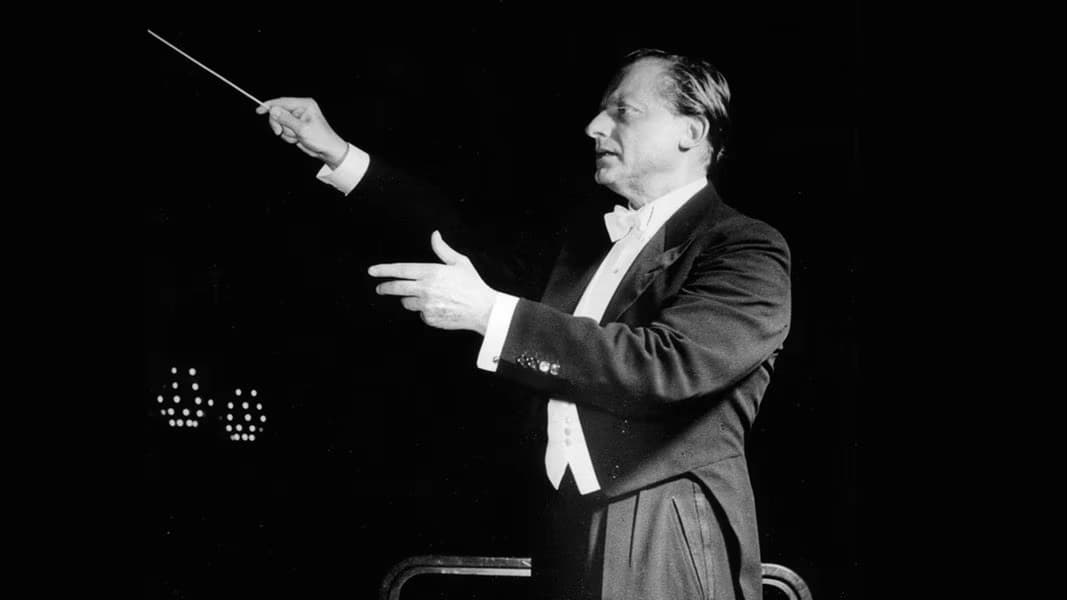
Hans Schmidt-Isserstedt, 1945
This recording was made in 1935 with Hans Schmidt-Isserstedt leading the Berlin Philharmonic. The early recording date will explain the breakneck speed of this recording: on 78 records, there was about three and one-half minutes of recording time, and this recording of the Figaro Overture is 3 minutes and 37 seconds long. Most modern recordings start at 4 minutes.
The conductor, Hans Schmidt-Isserstedt (1900–1973), studied at the Berlin Hochschule für Musik and also studied at Heidelberg, Münster, and elsewhere in Berlin. His doctoral dissertation was on the Italian influences on the instrumentation of Mozart’s early operas. He started in opera as a repetiteur (accompanist) at the Euppertal opera while also pursuing his conducting career. From 1935 to 1943, he was chief conductor at Hamburg State Opera, then director of opera at Deutsche Oper Berlin, becoming its general music director in 1944. His avoidance of the National Socialist party and sending his Jewish wife and their two sons to England in 1936 stood him in good stead after the war, where he was charged by the occupying British forces with establishing a new orchestra.
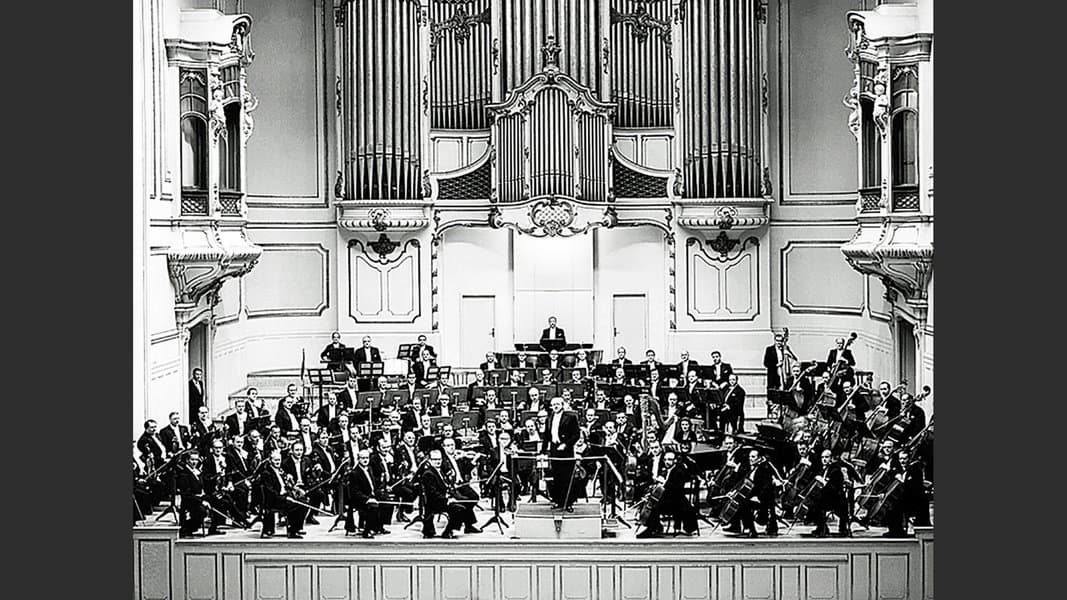
The NWDR Symphony Orchestra and Hans Schmidt-Isserstedt at a concert in the Laeiszhall, ca 1955
The Nordwestduetscher Rundfunk (Northwest German Radio) Orchestra was modelled on other well-known radio orchestras, such as the BBC Symphony Orchestra and the NBC Symphony. Within 6 months, it was brought up to standard and had its first public concert in November 1945. He remained the musical director of the NWDR-SO for the next 26 years. His recording work started in 1934, and this recording would have been among his earliest, made with Telefunken.
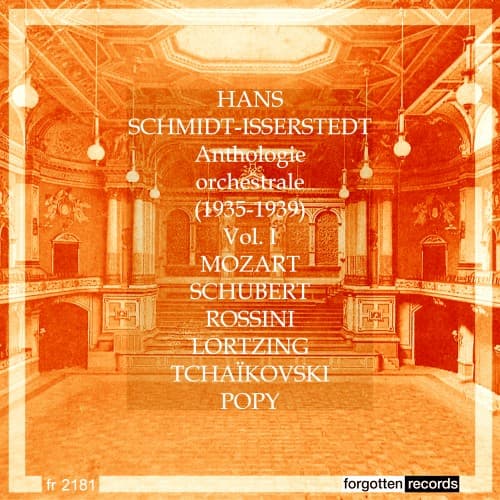
Performed by
Hans Schmidt-Isserstedt
Berlin Philharmonic Orchestra
Recorded in 1935
Official Website
For more of the best in classical music, sign up for our E-Newsletter
